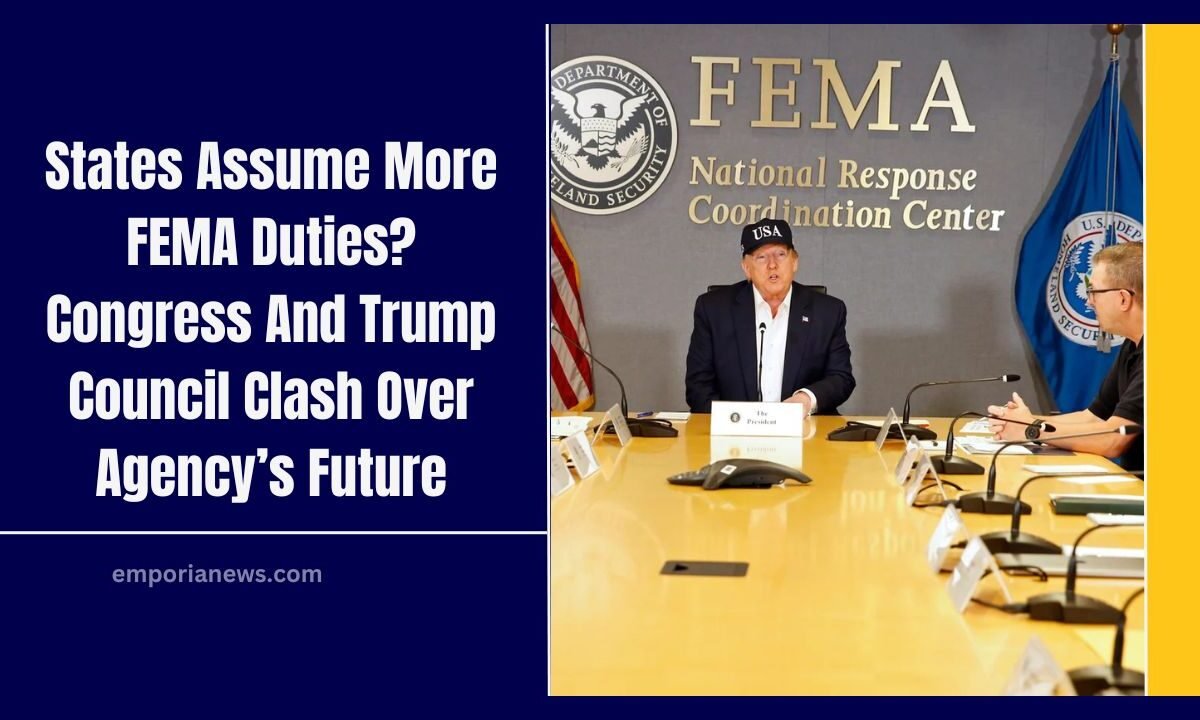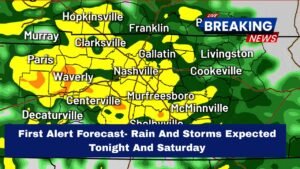The Federal Emergency Management Agency (FEMA) may look very different by the time the 2026 hurricane season arrives.
A fierce debate is underway in Congress and within the Trump administration’s review council about whether states should assume more responsibilities for disaster response and recovery, or whether FEMA should be restructured entirely.
For years, critics from both political parties have pointed to FEMA’s bureaucratic hurdles. Now, momentum is growing for significant reform—or even a drastic overhaul that could reduce the federal government’s direct role in natural disaster management.
Trump’s Review Council Pushes State-Led Model
President Donald Trump has made it clear that he views FEMA as an agency in need of sweeping change.
He has frequently argued that states should bear the primary responsibility for disaster management, with the federal government playing only a supporting role.
Trump’s 12-member FEMA Review Council, chaired by Homeland Security Secretary Kristi Noem and Defense Secretary Pete Hegseth, has until mid-November 2025 to deliver recommendations. Among the proposals being considered are:
- Scaling back FEMA’s disaster recovery operations
- Providing states with block grants instead of direct federal coordination
- Limiting FEMA’s role to financial assistance rather than long-term recovery
Some council members, including governors and former state leaders, have urged states to begin setting aside more funds for disaster response.
However, local officials have voiced concerns that smaller or rural communities will struggle to replace the federal safety net.
Congress Takes a Different Path
While Trump’s council considers scaling FEMA back, Congress is moving forward with a bipartisan reform bill designed to strengthen the agency, not eliminate it. Lawmakers from both parties introduced the FEMA Act of 2025, which aims to modernize the agency and cut through red tape.
The bill proposes four major changes:
- Elevating FEMA to a Cabinet-level agency for greater authority and visibility.
- Prioritizing mitigation projects to reduce the long-term impact of disasters.
- Streamlining aid programs to ensure disaster victims receive timely housing and financial support.
- Allowing states flexibility to design support programs tailored to local needs.
Additionally, the House Appropriations Committee has recommended a $31.8 billion FEMA budget for the next fiscal year—an increase of $4.5 billion over current funding.
States Worry About Financial Burdens
The possibility of states assuming greater responsibility has prompted mixed reactions. Larger states with stronger economies may be able to absorb costs, but smaller and rural states fear being overwhelmed.
City and state officials warn that creating robust disaster recovery funds could require raising taxes or cutting other services, while still leaving communities vulnerable.
Many note that federal coordination is essential during large-scale crises such as hurricanes, wildfires, or earthquakes—events that often exceed the capacity of any single state.
Former governors and mayors participating in the council have emphasized the need to clearly define which costs states will be expected to cover and what level of federal assistance will remain.
Funding, Staffing, and Climate Pressures
FEMA is already facing operational challenges. Staffing levels have dropped by nearly one-third in recent years, while the demand for assistance continues to grow.
Meanwhile, climate change is driving more frequent and severe disasters, straining the agency further.
Shifting duties entirely to states could create unequal disaster response systems, where wealthier states recover faster while poorer ones fall behind. Critics argue this would leave vulnerable populations without the resources they need during emergencies.
The debate over FEMA’s future comes at a critical time. With Trump’s Review Council pushing for a state-led disaster model and Congress advancing reforms to strengthen the agency, the direction of U.S. emergency management hangs in the balance.
Whether FEMA emerges as a streamlined, Cabinet-level agency or a scaled-back, state-support model, one thing is clear: the stakes are high.
The outcome will shape how America responds to hurricanes, wildfires, floods, and other disasters for years to come.




